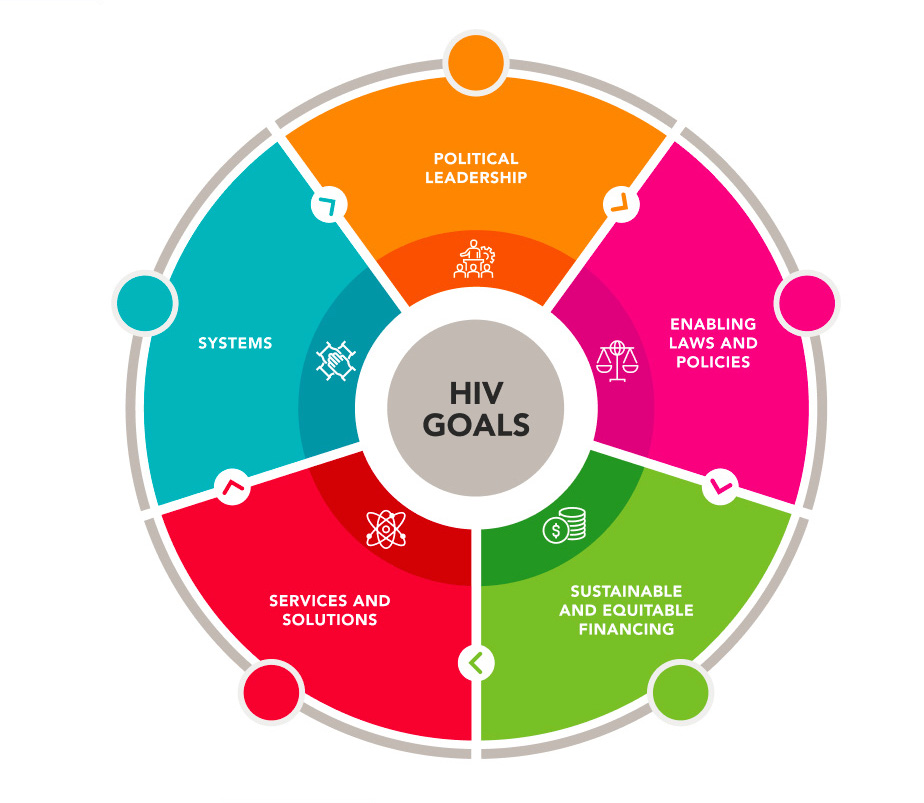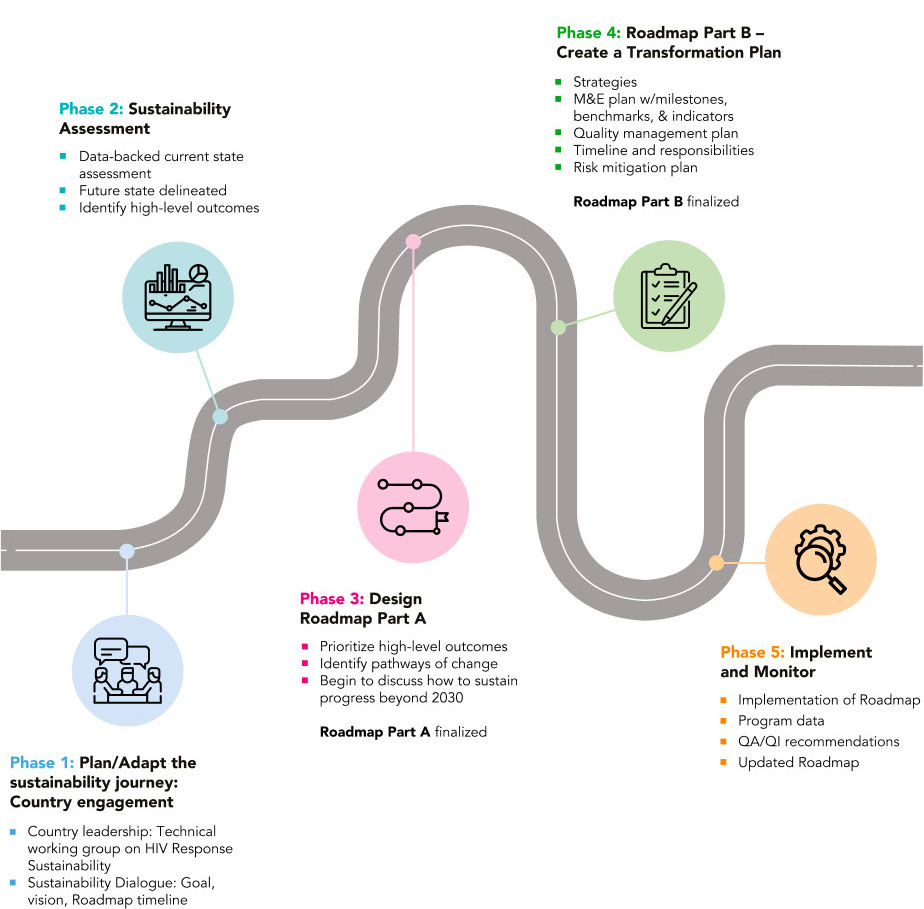As countries work to develop roadmaps and navigate the path towards sustainability using the new approach to ensure the sustainability of the HIV response UNAIDS continues to seek key moments and opportunities to support countries, communities and other stakeholders in conducting HIV response sustainability dialogues and shaping HIV sustainability roadmaps and ensuring that stakeholders are well equipped for the in-country work.
The overarching objective of this section is to provides answers to questions that have been received from UNAIDS country officers,
national counterparts, staff of our co-sponsor agencies and partners (including PEPFAR and Global Fund), as well as from
participants on the multiple internal and public webinars that UNAIDS has convened.

This new approach to HIV sustainability that puts countries at the centre, leading the response to HIV and guiding the transformations required to reach the 2030 SDG targets and to sustain impact beyond 2030. It is a more holistic approach to thinking of sustaining the HIV response, focusing beyond financial sustainability to the political, programmatic, systems, and services transformations needed to maintain impact of the HIV response by and beyond 2030.
